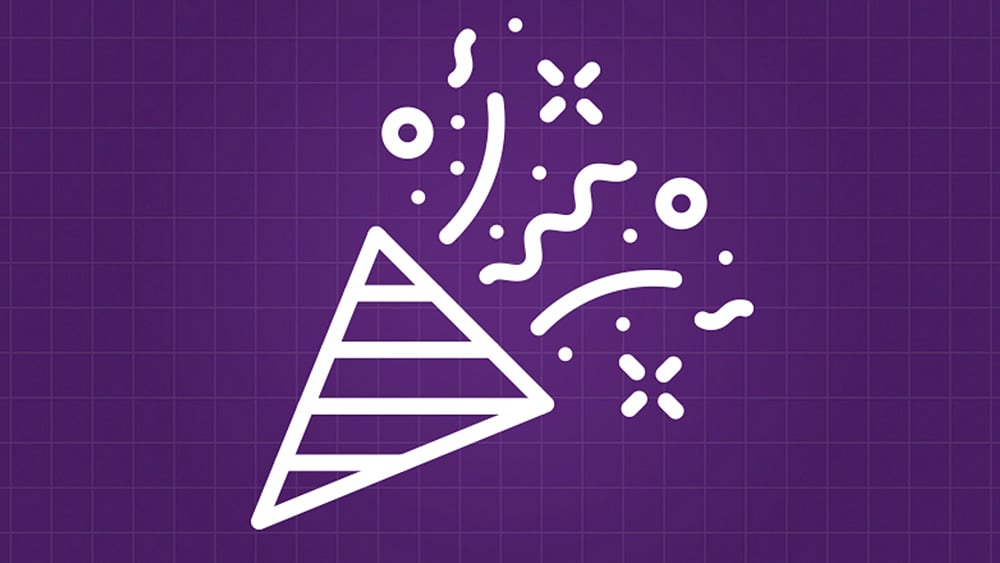6 min read
DIAL Turns 30 This Year: Happy Birthday!
As it approaches its 30th birthday, the DIAL model remains the powerful engine to deliver personalization to drive sales growth and customer lifetime...
Get the latest insights, research and news delivered straight to your inbox.
Plus, enter to win the 2nd edition of Omnichannel Retail by Tim Mason & Sarah Jarvis!
No spam. We promise. 💜
Grocers have adapted their operations rapidly, but there is more transformation coming. Here are the top 5 trends we see accelerating in 2022.
Over the past two years, grocers have had to adapt and evolve their operations at an incredible pace. The fact that so much change occurred in such a short period doesn't mean the industry is done with transforming—quite the opposite.
The success of many pandemic-catalysed adaptations - has become the foundation of 2022 grocery retailer trends. For example, e-commerce grocery shopping (online ordering, third-party delivery, and curbside pickup) has transitioned from a socially-distant necessity to everyday life for many consumers.
In turn, we can expect to see a continued increase in the adoption of omnichannel retail by grocers, large and small – optimising what were once stopgap solutions and expanding their capacity to meet ongoing demand. Other pandemic changes that will inform 2022 retail trends include hyperlocal products in big box stores and an even greater emphasis on sustainability.
Of course, new trends continuously emerge in response to myriad factors, and every grocery retailer cannot adopt every change all at once. So, let's look at the top 5 trends we envision accelerating in 2022.
"Marketing in the moment" is a strategy that delivers the optimal, personalised advertising message to grocery shoppers at the most opportune time via the most relevant channel to the intended target. It's achieved by aggregating multiple data points, such as consumer purchasing patterns, app usage and demographics, for each customer.
Individual consumer data is viewed within a larger context, including seasonality, time of day, product availability and the retailer's promotional goals. That allows brands to deliver customised advertising at the precise moment to best motivate consumers to purchase.
Here's a potential scenario where marketing in the moment can activate sales. By analysing a shopper's transaction history through the grocery store's native app, the retailer knows that customer spends more in the frozen food category than any other. When that shopper creates a curbside pickup order after 6 PM, their propensity for purchasing a frozen food item rises even higher.
Marketing in the moment would identify that in-app coupons for frozen goods should be front and centre when this customer opens the app after 5 PM or that frozen foods suggestions are always included during the customer's online checkout.
A marketing in the moment approach to advertising can help brands better understand what customers want, what they will respond to, and what opportunities exist. More importantly, it enables retailers to take action on that insight at the precise time when it matters most – when the shopper is making their purchasing decision. As more consumers made their shopping activity trackable through apps and delivery services, marketing in the moment capabilities skyrocketed over the past two years. This year, expect retailers to leverage this marketing strategy more fully.
To deliver highly personalized ads that strategies like marketing in the moment require, brands must draw on first-party data. That is particularly important as large tech platforms ban third-party data collection; Google plans to phase out third-party cookies on its popular Chrome browser by 2023. In 2022, expect to see more grocers invest significant resources into first-party data collection vehicles like customer engagement and loyalty programs, where shoppers are most likely to share data and feedback even when they're transacting in-store.
Of course, most national and regional grocery chains already have a loyalty or rewards program of some sort in place. What we will see in 2022 is retailers enhancing and expanding those programs, integrating them into e-commerce sales channels to capture a complete picture of customer activity. They'll also likely invest in improvements to the points where shoppers interact with the loyalty programmes to ensure higher usage rates and more data collection. And it won't be just the big corporate chains building out their first-party data capabilities; expect small and midsize retailers to try and carve out a digital advantage as well.
That said, customer data collection and personalisation have always been a balancing act. Finding that sweet spot where consumers feel seen but not overly observed has always been the goal. Walking this line has made grocery retailers cautious about tracking and leveraging individual customer activity in the past.
But while the need for data integrity remains, consumers' increasing adoption of e-commerce during the pandemic has increased their comfort level over data collection and personalisation.
Grocery customers that were previously in-store only have become hybrid shoppers, assembling their orders online for curbside or in-store pickup. This change means that grocery retailers now have access to more individual customer data than ever before.
Expect to see this adoption of digital engagement spill over into brick-and-mortar grocery environments as grocery retailers strive to build on this rise in digital engagement. That means an increasing number of things like scan-and-go payment solutions, smart shopping carts, and self-checkout, all of which will help grocers keep the digital communication channels open.
Not all of the pandemic-related changes had to do with personal shopping habits. Supply chain issues that dominated headlines over the past two years suddenly made consumers more aware of how the goods they purchase are sourced, from where and at what cost. Combined with increasing awareness of climate change, this created a substantial segment of shoppers who are more conscientious of their carbon footprint.
Today's shoppers show a growing interest in brands and retailers that support their commitment to being environmentally responsible. Consumers also want greater transparency from brands; carbon labelling helps consumer goods manufacturers demonstrate that their use of recycled materials and sustainable production methods make a tangible and measurable difference.
As a result, we'll see a continued increase in products whose labels demonstrate evidence of their carbon footprint and more opportunities for retailers to educate shoppers on how their purchases will impact the planet this year and for generations to come.
Like many of the above trends reflect, omnichannel grocery shopping is here to stay. Forced to change the way they shopped during the pandemic, consumers have adopted new purchasing practices and now expect grocers to provide an omnichannel shopping experience.
Grocers can no longer sell in just one channel or another. In-store shopping, app browsing, online grocery delivery, curbside pickup, rewards programs with perks and discounts—this variety and convergence of channels is the future of food shopping in 2022 and, indeed, this decade.
Consumers' appetite for frictionless omnichannel grocery shopping has been whetted, and the industry must lead into that demand. True omnichannel hybrid grocery stores like Amazon Fresh may still be in the early stages of development. But more brands and markets will likely test out similar tech-forward concepts that blend digital and physical.
The last two years have taught us to anticipate the unexpected. There will undoubtedly be more innovation while new consumer trends can erupt at any moment to upend even the most carefully planned strategies. Given the trends that will drive 2022 and resonate with the post-pandemic grocery consumer - flexibility, convenience, personalisation, and environmental responsibility – it will be up to retailers to meet those expectations. I do not doubt that they will, and I hope that this list inspires you and your retail operation in the year ahead.

Tim Mason has over 25 years’ leadership experience in the grocery and retail industries, with a strong background in strategic marketing and customer loyalty. He was the Deputy CEO of Tesco from 2010 to 2012 and has held a number of senior roles in the Tesco Group including CMO, where he was responsible for the launch of Clubcard and Tesco.com. He is currently CEO of Eagle Eye, a SaaS technology company focused on delivering omnichannel personalization at scale for the world’s leading retailers.
Get the latest insights, research, and news delivered straight to your inbox.
Plus, enter to win the 2nd edition of Omnichannel Retail by Tim Mason & Sarah Jarvis!
No spam. We promise. 💜

6 min read
As it approaches its 30th birthday, the DIAL model remains the powerful engine to deliver personalization to drive sales growth and customer lifetime...
![The Grocery Loyalty Landscape in Asia Pacific [A Survey Snapshot]](https://eagleeye.com/hubfs/images/featured/eagle-eye-asia-pacific-loyalty-snapshot.jpg)
3 min read
Asia-Pacific’s grocery market boasts many unique factors that set it apart from other regions worldwide. Within this distinctive landscape, the...

2 min read
Woolworths Group CEO Brad Banducci recently revealed in an email to customers (31st March 2023) that over 250,000 people are now participating in the
